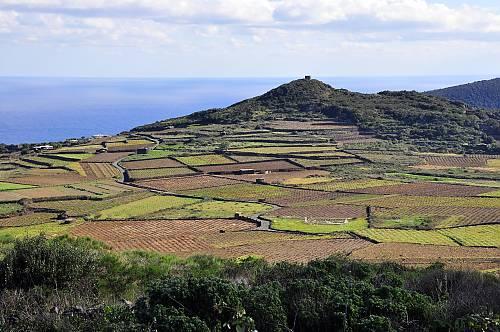Roy Malkin once wrote in an old copy of “Realities” that Rome is for priests, Florence for tourists, and Sienna for connoisseurs. I would like to add that Jerusalem is a city that will grab the attention of historians and archaeologists. That is especially so now, in the wake of an exciting find—a unique sample of written text unearthed near Jerusalem’s Temple Mount after years of excavating.
It dates back to the tenth century BCE and the few letters of the Canaanite alphabet inscribed on the shoulder of a pottery jar are now being studied. Six other pots were also found at the same site.
The finds are from the Ophel Excavation Site, an elevated area in the City of David beyond the southern edge of Jerusalem’s Temple Mount. The jar fragment with the written text, part of a large pithos, was found by Dr. Eilat Mazer. This important artifact predates other finds with Hebrew inscriptions by 250 years and is believed to be the earliest alphabetical written text discovered.
From left to right, the letters, which so far have no known meaning, correspond to m, q, p, h, n, (probably) l and n. They are approximately 2.5 cm. high and it is believed they might spell out either the name of the jar’s owner or what the contents were.
It dates back to the rule of King Hezekial, King of Judah whose reign (c.727 to c.698 BCE) was marred by religious reforms and by the prophecy of Isaiah and Micah, indicating the destruction of Jerusalem and Samaria.
Archaeologists and historians usually refer to the Canaanites of the pre-1200 or 1000 BCE era as Canaanites and their descendants, who left the Bronze Age for the Iron Age, as Phoenicians. Canaan is the area lying between the Jordan River, the Dead Sea and the Mediterranean Sea. It was the promised land of the Israelites, and after their delivery from Egypt they subjugated it.
Linguistically, the Canaanite languages form a group within the Northwest Semitic languages. The best known of these languages today is Hebrew. More information can be found in Michael Coogan’s “Stories from Ancient Canaan,” a translation of the cuneiform tablets from the city of Ugarit. Other Canaanite languages are Phoenician, Ammonite, Moabite and Edomite.
Notes supplied by the Israeli Ministry of Tourism. For more information, visit: www.goisrael.com
Susan Hallett is an award-winning writer and editor who has written for The Beaver, The Globe & Mail, Wine Tidings, and Doctor’s Review among many others. Email: [email protected]
Excavation in Jerusalem Yields Earliest Example of Canaanite Text
Roy Malkin once wrote in an old copy of “Realities” that Rome is for priests, Florence for tourists, and Sienna for connoisseurs. I would like to add that Jerusalem is a city that will grab the attention of historians and archaeologists. That is especially so now, in the wake of an exciting find—a unique sample of written text unearthed near Jerusalem’s Temple Mount after years of excavating.
Save

A recently discovered pottery jar that displays the earliest example of Canaanite text. Dr. Eilat Mazar/ Ouria Tadmor
Updated:




